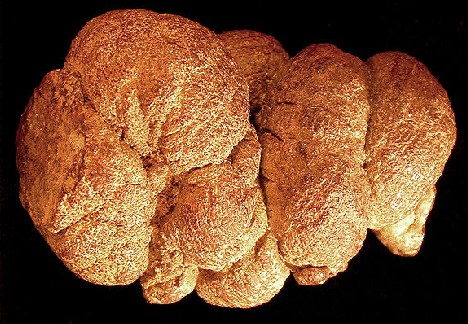
Definition: fossilised faeces
Bones are all well and good, but there’s plenty to be learned from certain things that ancient creatures left behind, from their behind.
Coprolites are lumps of faeces that have been preserved well enough to have mineralised into rocks and become fossils. The largest known ancient coprolite almost certainly came from a T. rex. It’s known as the ‘Saskatchewan coprolite’ after the location in Canada where it was uncovered. The high percentage of bone matter helped preserve the coprolite and also reveals it to be a meat-eater’s. At over 30cm long, the only carnivorous beast big enough to produce such an offering in the area 65.5 million years ago was T. rex itself. As the original scientific paper describing it says, this is indeed a king-sized coprolite!
Coprolites are incredibly valuable to researchers trying to find out about the natural world millions of years ago. They give a snapshot into the life of whoever produced it, and can inform us about entire ecosystems. Thanks to some titanosaur-pats from the Late Cretaceous for instance, we know some dinosaurs ate grass. This was a rather surprising find as we used to think grasses evolved a whole 10 million years after the dinosaurs were killed off. Knowing grasses were around much earlier than we thought might change the way we look at other fossils from that period—perhaps they were grazers too.
We can learn something about the health of dinosaurs from their poop. Coprolites from the early Cretaceous period have been found containing tiny worm eggs and some curious cysts. These cysts may be a sign that the original ‘donor’ (sadly we don’t know their identity) was infected with a gut parasite related to a rather nasty one which infects 50 million people today, called Entaemoeba histolytica.

More recent coprolites can even provide us with the DNA of extinct species. The Shasta ground sloth was a bear-sized mammal that lived tens of thousands of years ago in what is now Western USA. Through careful extraction techniques, researchers isolated DNA not only from the sloth’s foodplants but also the sloth itself, an incredible accomplishment.
Coprolites may have started out as waste, but within them are hidden secrets about worlds long lost to the mists of time.
BONUS FACTS
1. So much for dinosaur poop, but what about pee? There may be evidence of that in the form of some ‘bathtub shaped depressions’ that can’t be explained geographically.
2. It’s very unlikely we’ll be able to obtain dinosaur DNA from coprolites, or any other source for that matter. DNA degrades rapidly with a half-life of 521 years, so the amount found even in a large, perfectly preserved sample would be unusably small even after a million years, let alone 65 million!
